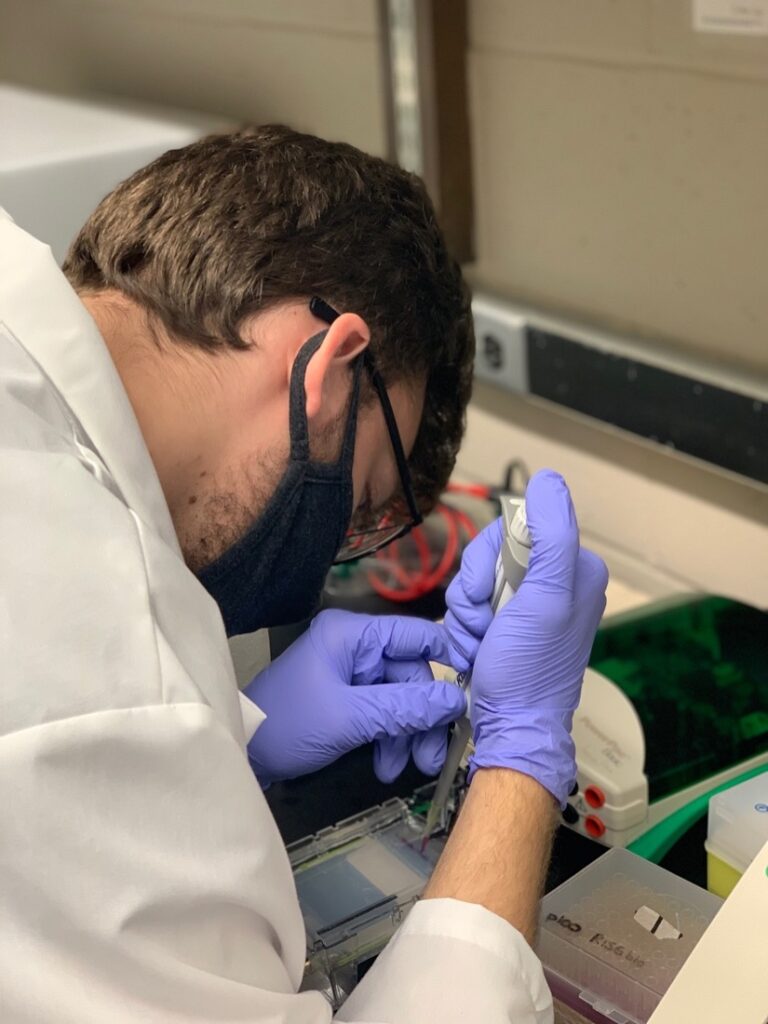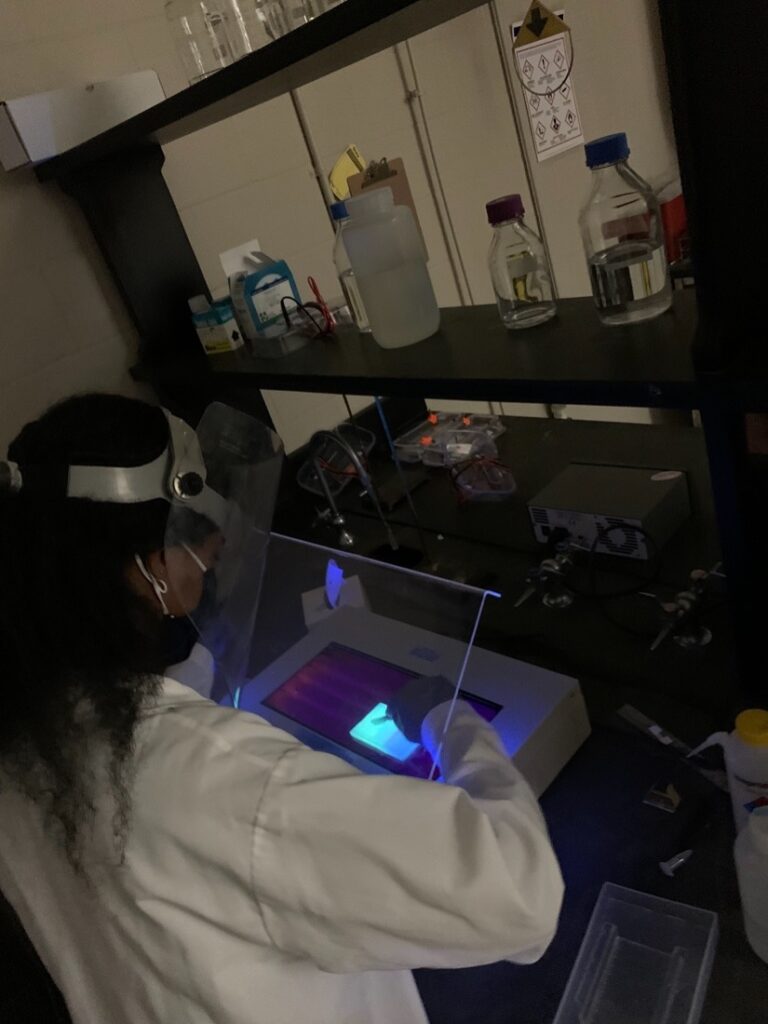October 5, 2021
D’Aaliyah Johnson, Matthew Trenne, Carter Beck
Introduction:
During spring of 2021 our lab group chose two microRNAs to observe how they interact with APOCEC3A and APOBEC3B. Our first microRNA is hsa-mir-4297, which has a target score of 82. Our other microRNA is hsa-mir-1207-3p whose target score is 60. Last semester we had successful primers and were able to clone our microRNA into pMiniT with great concentrations of 170.6µL for 1207-3p and 110.2µL for 4297. We were very excited to start our next steps during the fall semester and continue working with our microRNAs.
Specific Content:
The first thing that we did this semester was a restriction digest and phosphatase treatment. The goal of this lab was to cut the microRNAs out of the pMiniT so we could put it into the pcDNA, which we also wanted to cut. This lab ended up being successful and we were able to move onto our next protocol.
Next, we did a gel purification where we put our pcDNA and miRNA into a gel, extracted it from the gel, and then purified it. This is where we hit a roadblock. Our pcDNA nor did our miRNA cut so we could not complete the cutting and extraction of the gel portion of the lab.
We decided to do another restriction digest but this time with enzymes that we knew would work to use as a control. We did the same process as explained in the previous paragraph with enzymes named Eco, Bam, and one with Eco + Bam to determine our source of error. We ended up seeing the cutting of the enzymes meaning the source of error with our miRNAs is not our enzymes.
Reflection:
We redid the restriction digest lab with our miRNAs only this time we included 1µL of Eco and Bam in each sample as a control. We were able to see the appropriate bands in the pcDNA meaning we could cut and extract it using a UV light. Our miRNAs did not cut so we could not move forward with those.
Our next steps are to transform our plasmids into E. coli and then inoculate the colonies that form from the bacteria. We will then do a miniprep along with a miRNA construct and setting up another restriction digest. By the end of this process we plan to run a gel and successfully cut and extract our DNA from it like what we did with the pcDNA in our previous lab.



